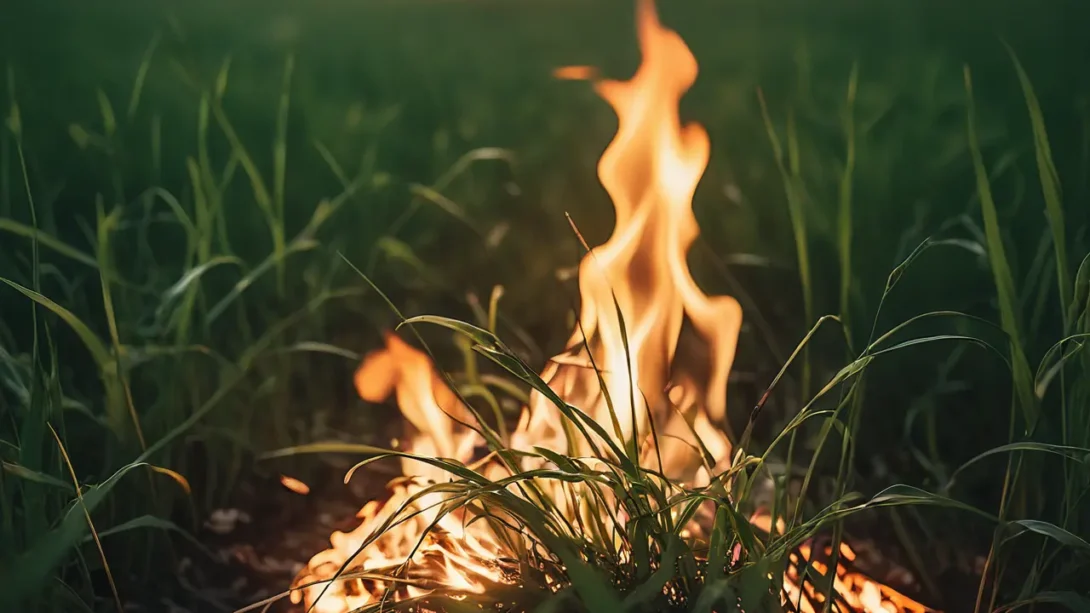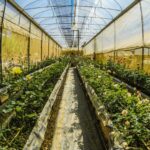The practice of burning grass has been ingrained in human culture and land management practices for centuries, with diverse motivations ranging from ecological conservation to aesthetic considerations. For many, the sight of controlled burns sweeping across grasslands evokes images of renewal and regeneration, while for others, it may raise questions about the environmental impact and necessity of such actions. In this exploration, we delve into the multifaceted reasons why people choose to burn their grass, examining the historical, ecological, and practical factors that shape this age-old practice.
Historical and Cultural Context
To understand the motivations behind grass burning, it’s essential to consider its historical and cultural roots. Throughout history, various indigenous cultures and traditional agricultural societies have utilized fire as a tool for managing landscapes and ecosystems. Controlled burns were employed to clear land for cultivation, promote the growth of desirable plant species, and maintain habitat diversity. Over time, grass burning became intertwined with cultural practices and beliefs, shaping landscapes and ecosystems in profound ways.
The ecological benefits of controlled burns are manifold, encompassing aspects of biodiversity, habitat restoration, and ecosystem resilience. By removing accumulated thatch and suppressing woody vegetation, controlled burns create open spaces that support the growth of fire-adapted plant species and enhance habitat diversity. In grassland ecosystems, fire plays a crucial role in maintaining ecological balance, promoting nutrient cycling, and mitigating the encroachment of invasive species.
Furthermore, controlled burns are essential for reducing the risk of catastrophic wildfires and protecting communities from the destructive effects of uncontrolled fire. By strategically burning grasslands and other fire-prone areas, land managers can reduce fuel loads, create firebreaks, and limit the spread of wildfires. This proactive approach to fire management helps safeguard both human communities and natural landscapes, fostering resilience in the face of changing environmental conditions.
Ecological Benefits of Grass Burning
Beyond historical and cultural contexts, the ecological benefits of grass burning underscore its importance as a land management tool. Controlled burns serve as a mechanism for restoring and maintaining healthy grassland ecosystems, which are vital habitats for a diverse array of plant and animal species. By removing accumulated thatch and woody debris, controlled burns create open spaces that support the growth of native grasses, wildflowers, and other fire-adapted vegetation.
Grasslands that undergo periodic burning exhibit higher levels of biodiversity, with an abundance of species adapted to fire-prone environments. Fire-adapted plants, such as prairie grasses and wildflowers, thrive in the aftermath of controlled burns, capitalizing on the release of nutrients and the reduction of competition from woody vegetation. These plant communities, in turn, provide essential habitat and food resources for a variety of wildlife, including birds, insects, and small mammals.
Moreover, controlled burns play a crucial role in maintaining ecosystem resilience and mitigating the impacts of climate change. Grasslands that undergo regular burning are better equipped to withstand drought, invasive species encroachment, and other environmental stressors. By promoting the growth of fire-adapted vegetation and enhancing ecosystem diversity, controlled burns contribute to the overall health and stability of grassland ecosystems, helping to preserve their ecological integrity for future generations.
In addition to ecological benefits, controlled burns are essential for supporting agricultural productivity and sustaining rural livelihoods. Many ranchers and landowners rely on controlled burns to manage pastureland, improve forage quality, and control invasive weeds. By rejuvenating grasslands and promoting the growth of nutritious forage plants, controlled burns help support livestock grazing operations and enhance the productivity of agricultural landscapes.
Practical Considerations and Challenges
While the ecological and cultural benefits of grass burning are significant, it’s essential to acknowledge the practical considerations and challenges associated with this practice. Controlled burns require careful planning, coordination, and implementation to ensure they achieve their intended objectives while minimizing risks to human health, property, and the environment. Factors such as weather conditions, fuel moisture levels, and air quality regulations must be carefully evaluated before conducting a burn.
Safety is paramount during controlled burns, with strict protocols in place to protect firefighters, property, and adjacent landscapes from the potential impacts of fire. Adequate training, equipment, and resources are essential for conducting burns safely and effectively, with trained personnel overseeing every aspect of the burn operation. Community engagement and communication are also critical, ensuring that residents are informed and prepared for potential smoke impacts and other disruptions.
Environmental considerations, such as air quality, wildlife habitat, and water quality, must be carefully managed during controlled burns to minimize adverse impacts on sensitive ecosystems and protected species. Smoke management strategies, such as burn timing, smoke dispersion modeling, and public notification systems, help mitigate the effects of smoke on air quality and human health. Additionally, wildlife surveys and habitat assessments inform burn planning and implementation, ensuring that ecological values are protected and enhanced.
Regulatory compliance is another key aspect of grass burning, with federal, state, and local regulations governing burn practices and emissions. Permitting requirements, burn bans, and seasonal restrictions may apply, depending on jurisdictional regulations and environmental conditions. Land managers must navigate these regulatory frameworks while balancing the ecological, social, and economic objectives of grassland management.
Alternatives to Grass Burning
In some cases, alternative land management practices may offer similar benefits to grass burning without the use of fire. Mowing, grazing, herbicide application, and mechanical vegetation removal are among the techniques that can achieve vegetation management goals while minimizing the risks associated with fire. Integrated land management approaches, combining multiple strategies tailored to specific objectives and site conditions, offer flexibility and resilience in the face of changing environmental conditions and management priorities.
In conclusion, the practice of burning grass reflects a complex interplay of ecological, cultural, and practical considerations, with implications for landscapes, ecosystems, and communities. By understanding the motivations behind grass burning and the challenges it entails, land managers and policymakers can make informed decisions that promote the long-term sustainability of grassland ecosystems and the well-being of people who depend on them. Through careful planning, collaboration, and adaptive management, we can harness the benefits of grass burning while safeguarding the ecological integrity and resilience of our natural landscapes.



